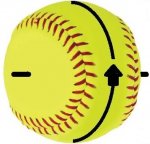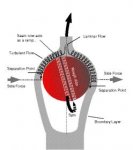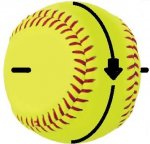BM's corkscrew curve requires a twist of the shoulders and hips. You must throw across your body (from pocket to pocket) to make the ball go right to left. You also must cut under the ball to get good 9-3 spin(pitchers perspective).
The corkscrew curve, when thrown correctly is very nice pitch to have. Look at BM's video, he explains it in detail.
The corkscrew curve, when thrown correctly is very nice pitch to have. Look at BM's video, he explains it in detail.






